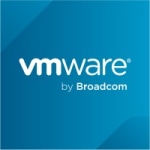What is our primary use case?
We have used the solution for IPS, IDS, and security incident response. We have used Defender as an antivirus, anti-malware, and intrusion detection. We used Intune for endpoint management and endpoint detection response. We use Purview for insider threats, data leakage detection and response, and data classification.
You can use the Azure security policies to enforce your compliance objectives. We also used web firewalls and identity governance, which is a security feature or can be used as such.
What is most valuable?
The solution's front door and web application firewalls have proven most beneficial for our edge computing needs. The solution provides end-to-end comprehensive protection across the services.
What needs improvement?
You have vulnerability management tools as well. The way this solution gives you steps to follow to remediate vulnerability is not very well done. It can't be an idealized process. It needs to deal with what really exists and provide more support to people who are remediating.
The main challenge with the tool for a security person is protecting the data in transit between the on-premises or hybrid application and the public cloud. Knowing how to move the data securely at a reasonable cost was difficult.
For how long have I used the solution?
I have been using Azure Stack for eight years.
What do I think about the stability of the solution?
Sometimes, Microsoft services fail without warning. The solution sends you a warning, but it's not enough of a warning in advance, which they could improve. Sometimes, we would think our application failed, but it would actually be the underlying Microsoft services that failed.
What do I think about the scalability of the solution?
Azure Stack is a highly scalable solution. Our organization had around 500 users using the solution. We had plans to increase its usage to minimize the use of third-party tools because of cost considerations.
How are customer service and support?
Sometimes, the technical support was excellent, and sometimes, they knew nothing. It's not that the people on the support team were not good, but they were not necessarily well-informed about new services.
How would you rate customer service and support?
How was the initial setup?
The solution's initial setup is usually straightforward. However, it's not simple unless you have experience in that field. The only complexity I encountered was integrating it with Business Intelligence (BI). However, that could have been my own ignorance about BI rather than Microsoft.
When I tried to scrape data out of the rest of the services and dump it into BI to analyze it, I didn't find it very helpful. I also didn't find the documentation helpful, but that's probably my ignorance. If I had known more about data analysis, I would probably have had an easier time.
What about the implementation team?
The solution's deployment time took about nine months, but there were many significant enterprise-level applications to migrate. The holdup was more about the application team ensuring they could meet the business's needs before migrating.
To deploy the solution, you follow a typical business analysis process, where you gather requirements from the business, the cybersecurity team, or stakeholders. Then, you work in the cloud to find out how to meet those requirements using that solution. Earlier, you had to have a third-party VPN, but now they have their own VPN. The cloud was not quite mature until the last few years.
What's my experience with pricing, setup cost, and licensing?
I find Azure Stack to be very costly. The people who manage the budgets are satisfied with the solution’s medium pricing, which is neither very expensive nor very cheap. I think the solution has a reasonably good value for what it provides.
What other advice do I have?
The solution's integration with other Azure Services is extremely valuable. Since everything is designed to fit together, you don't have to do a lot of work to integrate the services with the security protections or vice versa.
The way the solution handles data sovereignty could use some work. You still need to do a lot of work to determine where the processing occurs. Suppose you have a Canadian residency requirement. Many services still have processing in the United States or Asia, where sensitive data can be an issue. It would be better if the tool were more forthright about where processing occurs or could actually move processing into the countries where sovereignty is required.
Some third-party tools were well-adapted for integration with the solution. However, this was the result of the third parties' work, not of Microsoft's. The third parties ensured that all the work was done to integrate them with Azure Stack.
The solution consistently provides support and integration. Azure Stack tries to consider and meet the needs of cybersecurity professionals as best it can. Also, I like how the tool adapted to shift left, where security became the responsibility of the whole IT team, and they met that need very well.
Overall, I rate the solution a seven out of ten.
Which deployment model are you using for this solution?
Public Cloud
Disclosure: My company does not have a business relationship with this vendor other than being a customer.













